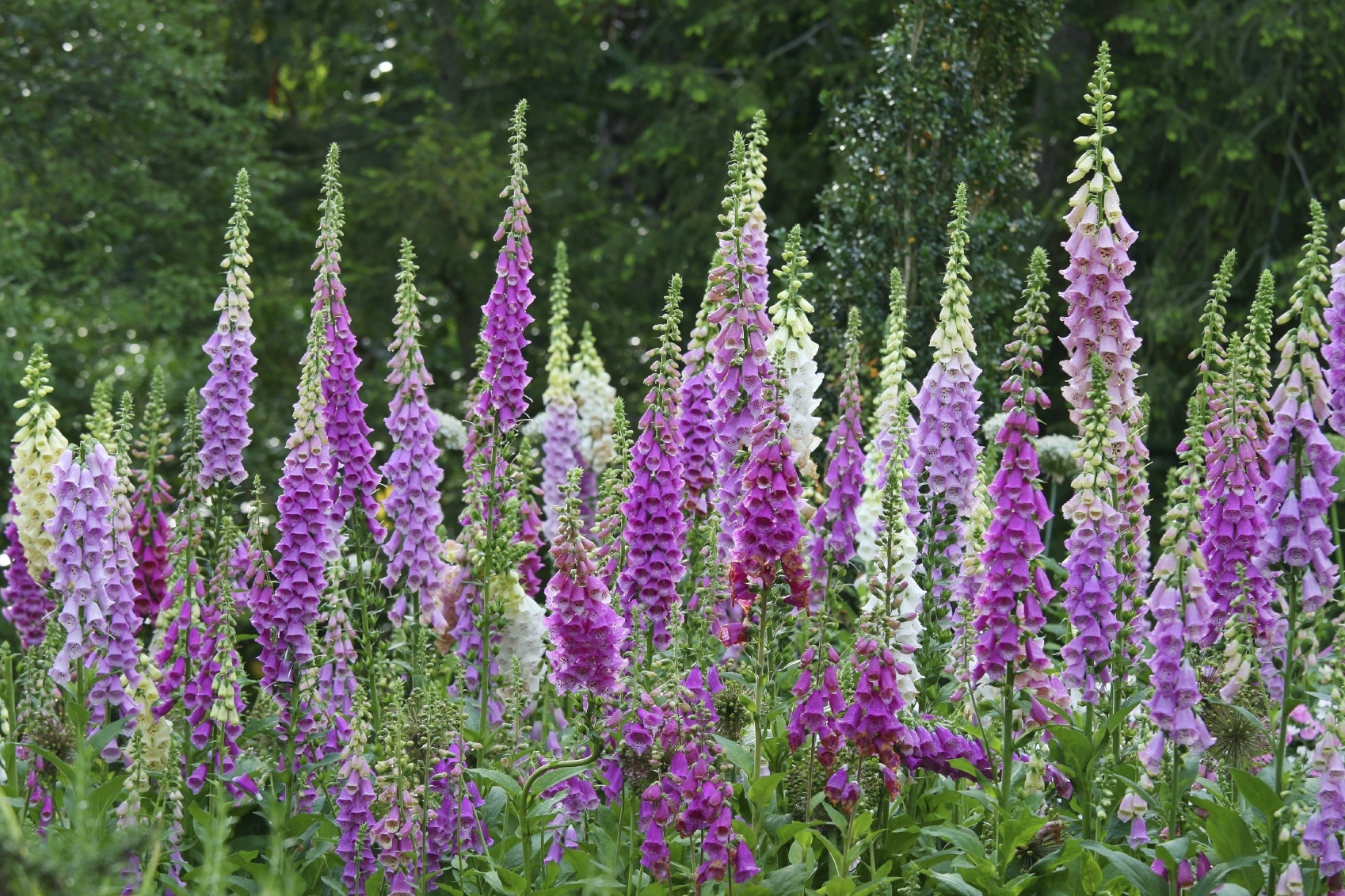
The sound of the leaves or branches rustling in the wind and the dappled light falling through the canopy above create a unique atmosphere.
There’s also an abundance of woodland flowers and plants for gardeners to enjoy.
And there’s no reason why you can’t bring a piece of that woodland scene into your garden.
A lot of you will have trees growing.
They might be juvenile ones that are so sparsely placed that they do little to change light levels.
However, you might have a dense canopy of foliage created by a large mature tree or even several clustered together.
Often, the ground under the trees is bereft of anything other than grass but with a little care, attention and planning, you can help bring out the best in these shady spots.
Seed manufacturer Mr Fothergill’s showed exactly what sort of plants people can use for these areas recently.
The company donated seed for a woodland wildflower area being prepared by students from Capel Manor College in Enfield.
The college, a leading education provider for those interested in plants, animals, flowers, trees and the environment, has its very own grounds and gardens.
One wooded area of the grounds has now been sown with a blend of around 20 woodland wildflowers.
This included agrimony, wild angelica, nettle-leaved bellflower, betony, bluebell, foxglove, meadowsweet, primrose, ragged robin and selfheal.
The mixture is ideal for the shady growing conditions found in the space cleared for sowing.
The 30 acres of themed gardens at the college are open to visitors daily throughout the year.
If you fancy visiting them, go to www.capelmanorgardens.co.uk to find out more information.
In my own garden, there is an area that is incredibly shady due to a row of conifers that grow in a neighbouring garden.
The ground in this area is dry and shady, presenting a challenge as to what to grow there.
However, there are plants that feel more at home there, including Cyclamen hederifolium, Fatsia japonica, Iris foetidissima, Mahonia aquifolium, Sambucus nigra and Viburnum davidii.
And shady areas aren’t the only part of your garden that can benefit from wildflowers.
You can always grow them in sunnier areas, increasing the variety for you to choose from.
Also, growing certain wildflowers will help local wildlife as many insects rely upon them.
For example, Britain’s long-suffering bee population, which has declined hugely, relies upon wildflowers.
If you want to help bees, it’s important to plant flowers rich in pollen and nectar which bees can access from spring until summer.
Examples include: Buddleja, Field Poppy, St John’s Wort, Crown Daisy, Corn Marigold, Wild Sage, Foxglove, Groundsel, Red Clover and White Clover.
If you’ve got space for it, you might even consider planting your very own wildflower meadow.
Meadows fall into two categories — annuals that provide a one-off show or perennial meadows that persist from year to year.
Perennial meadows thrive best on poor soils because the grasses compete less with the wildflowers.
If you have rich soil, it is worth removing the top layer and sowing directly into dug or rotovated sub-soil.
Annual meadows usually consist of cornfield annuals and need rich soils.
Garden centres and seed merchants supply mixtures of wildflowers and grasses suitable for various soil types and climates.
Why not give it a go. Go wild!
READ MORE
In Your Garden: You’ll really dig these ways to keep healthy

Enjoy the convenience of having The Sunday Post delivered as a digital ePaper straight to your smartphone, tablet or computer.
Subscribe for only £5.49 a month and enjoy all the benefits of the printed paper as a digital replica.
Subscribe